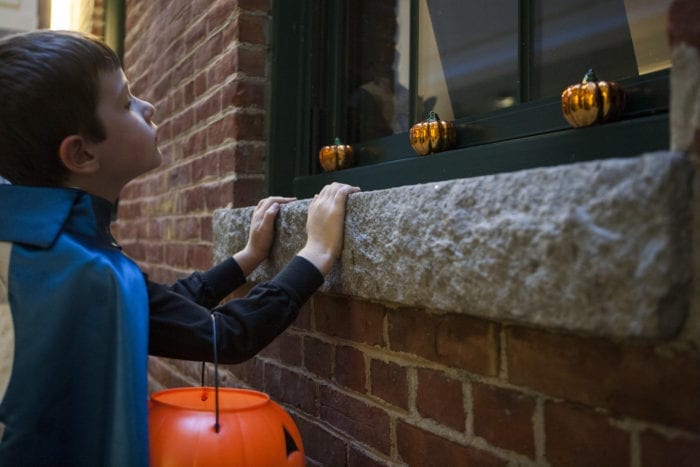Fall Fun without Sensory Overload
Published onFall is an exciting time of year. The breeze picks up, a chill is in the air, and the scent of cinnamon and pumpkin spice is all around. There is an excitement that accompanies this change of season. So, it is easy to overlook that some people find this time of year overwhelming, especially those with a sensory impairment, like vision loss.
What Makes Fall Overwhelming to the Senses?
From fall festivals to trick-or-treating and Halloween fun, what many find to be fun can cause a sensory overload for some people, and children are no exception.
Corn mazes, apple picking, and hayrides are at the top of many Fall activity lists. Picture what a crowded Fall Festival might feel and sound like; imagine the input that can flood one’s senses.
Think about putting on a Halloween costume and walking up to unfamiliar houses. Remember the homes that filled the dark sky with flashing lights, eerie sounds, frightful screams, and the startling decor. Now, take away your vision, even partially. How do you think you would react to the unusual stimulation?
The sense of smell, touch, sound, and sight are powerful in assessing the world around us. If one of those senses is weaker than the others or nonexistent, a person then relies heavily on their other senses. If those senses become flooded with input, it can be hard for a person to process their environment.
The Difference Between Overstimulation and a Sensory Disorder
Many people, with or without sight, can become overstimulated when there is a high level of input. Overstimulation happens when there is a lot of sensory input, like at a haunted house. When the stimuli are no longer present, a person can regulate themselves close to their typical baseline.
When a person has a Sensory Processing Disorder, the added stimuli can trigger a fight, flight, or fright response. However, when the stimuli are no longer present, the person is unable to regulate themselves back to baseline; this is known as sensory overload.
What is the Solution to Sensory Overload and Overstimulation?
Is the solution to remove all risk of sensory overload? Of course not.
But, preparing a person for the added stimuli in a safe setting is an excellent place to start.
First, it is essential to remember that people, especially children, process things differently. So, if Halloween is your jam, it’s important to recognize that you might need to scale your expectations back a bit; start slow.
It is important to prepare a person for what they might encounter during a sensory-stimulating activity. Talk to them about the events that will be taking place, what people will be wearing, and describe the possible smells and sounds.
Take them to the location when there is nothing going on so they can get the lay of the land. Locate a calm area that would be ideal for regrouping. Have an exit plan in place. This can alleviate a lot of the unknown stressors.
Limited exposure in a safe environment is a great place to start. There are many alternatives for people of all ages to enjoy fall in a setting that is right for them.
Fall Fun and Halloween Alternatives
If trick-or-treating is what you’d like to begin with, try going to a familiar shopping center. Many shopping areas offer a few hours of trick-or-treat fun. Explore the area together pointing out the stores and the familiarity of the location. This can be a game-changer in preventing overstimulation.
Another alternative to canvassing a neighborhood in search of treats at night is to attend smaller Fall Festivals often held at area schools and churches. There are many sensory-friendly Fall activities to explore.
A Trunk-or-Treat event is one that both adults and kids can enjoy. Rather than passing out candy from a house, people gather together, decorate their cars, and hand out candy from the trunk of their car. There are often other activities at these events, and if it becomes overwhelming, retreat to your car or a neutral location.
Fall Fun For Everyone
There is something for everyone to enjoy during the fall season. The key is to figure out the needs of the people in your group, set reasonable expectations for the day, and remember bigger isn’t always better. Some activities like taking a walk, going to a park, listening to the animals as they prepare for winter, and more can be just as exciting and can create a bonding moment for memories for years to come.
Categorized in: Informational, Uncategorized
This post was written by





Comments are closed here.